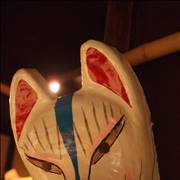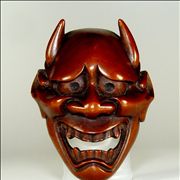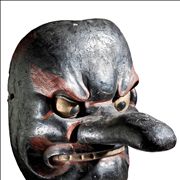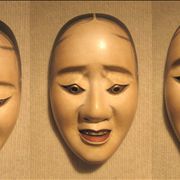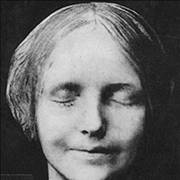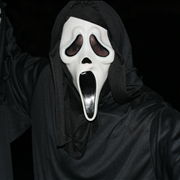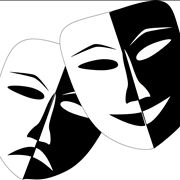Famous Masks - Information about Different Masks
There are many masks around the world which are used in different purposes. Masks are commonly used in rituals, ceremonies, hunting, feasts, wars, theatres, performances, fashion, sports, films, as well as in medical, protective or occupational purposes. Some of them are used as ornamentation. Here you can find more information about different masks.
Kitsune Mask
Kitsune mask is a mask of a fox. In Japanese culture, Fox has contradictory behavior. It can be benevolent (good) or malevolent (evil) depending on the situation. In Shinto religion, Fox is a messenger of the god Inari, who is the protector of rice, agriculture, and fertility. Fox brings rich harvest, and it is a symbol of wealth.
Hannya Mask
The Hannya mask represents jealous female demon in noh and kyōgen Japanese traditional theater plays and Shinto Kagura ritual dances. The mask has a learing mouth, sharp teeth, metallic eyes and two sharp devil-like horns. The expression of Hannya mask is at the same time demonic, angry, frightening, dangerous and tormented, sad, heartbreaking, melancholic and sorrowful. She begins as typical female, but when she is betrayed, get angry and jealous she turns into a demon.
Japanese Masks
Traditional Japanese masks are used in theater, festivals or rituals. They are connected to folk myths and tails. Masks represent people, creatures, devil, ghosts, and animals. Some of the Japanese traditional masks are Gigaku, Bugaku, Gyodo, Tengu, Kappa, Noh, Kyōgen, Shinto, Kagura, Kitsune, Hyottoko, Oni, Kabuki, Samurai, Kendo and Animegao masks.
Noh Mask
Noh mask represents age, gender and social ranking of human or nonhuman being such as animal, demon or divine. Noh masks are carved from single piece of wood (Japanese cypress) and painted with natural pigments using a neutral base of glue and crunched seashell. There are 60 types and over 400 different masks. All of the masks have a distinctive name. Intent of using Noh mask is to stylize and emphasize the facial expressions and then to match with body language and movement in order to stimulate the imagination of the audience of Noh play.
Death Mask
The death mask is made after death from dead man’s face. The material can be plaster cast or wax. The face is covered with plaster or wax until the material solidifies. A plaster cast is a copy made in plaster in 3-D form. It can represent mold for creating portraits or memento of the death. Throughout history in some cultures death mask represented artifact placed on dead man’s face before funeral rituals.
Indian Masks
Indian or Native American masks were made for ceremonies, decoration, war rituals, shaman rituals, rituals initiating young man into the tribe, in healing rituals, in entertainment, given as gifts and spiritual rituals. Native Americans believed that the person wearing a mask was taken over by the spirit that mask represents. Masks were decorated with paint, feathers, fur, straw, leather, or leaves. Trained dancers would wear the masks and perform legend stories.
Scold's Bridle
Scold’s bridle was iron muzzle with iron framework enclosing the head, usually of a woman, used for torture and humiliation. The humiliation process included a public display and punished people were led through town. Woman of the lower class who was characterized by unpleasant, scolding, aggression, gossiping, nagging or being a witch was punished by wearing the scold’s bridle.
Halloween Masks
Halloween, construction of All Hallows’ Evening, is a celebration on the eve on 31st October. It is believed that in this holiday days the souls of the dead roam the earth. Halloween masks and costumes should be frightening, spooky, scary and creepy. People believe it is important to honor the dead. Celts believed that this is the last night for the dead to have their vengeance before moving on so people wore masks and costumes not to be recognized, to scare away evil spirits and to prevent them from entering homes.
Theater Masks
Theater masks are used for representation of the specific mode of fiction in performance. There are many types of theater masks, but two most representative forms of theatrical masks are tragic and comic masks.
Greek Masks
Ancient Greek masks have been used in ceremonial rites and celebrations and they have been used in Greek theatre since the time of Aeschylus. Greek mask is one of the iconic conventions of classical Greek theatre.

